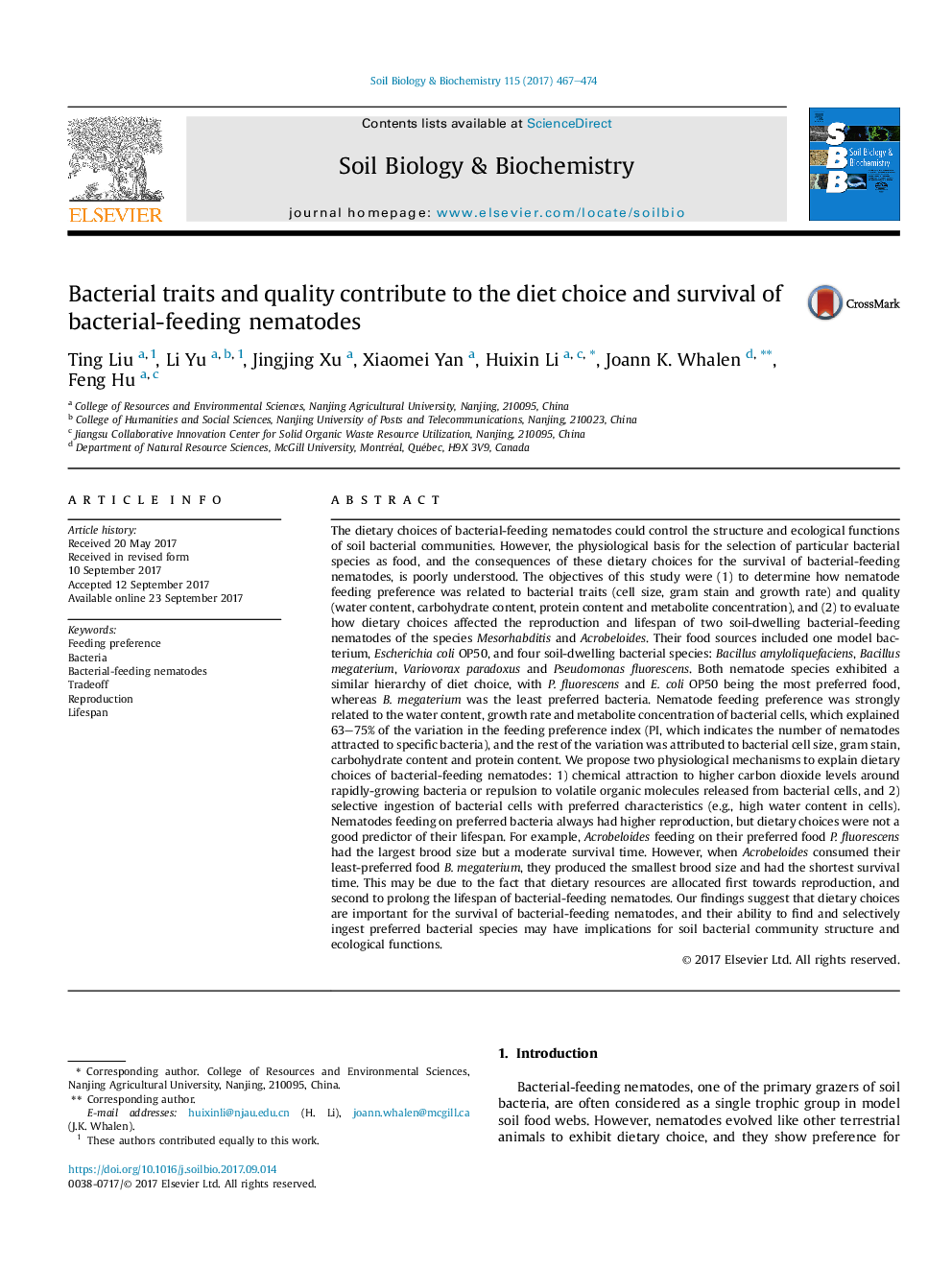| کد مقاله | کد نشریه | سال انتشار | مقاله انگلیسی | نسخه تمام متن |
|---|---|---|---|---|
| 5516268 | 1542569 | 2017 | 8 صفحه PDF | دانلود رایگان |
- Bacterial-feeding nematodes exhibited a hierarchy of diet choice.
- P. fluorescens was the most preferred food of bacterial-feeding nematodes.
- Nematode diet choice related strongly to bacterial traits and quality.
- Nematodes feeding on preferred bacteria resulted in higher reproduction.
- Nematode diet choice may regulate rhizobacteria-plant interactions.
The dietary choices of bacterial-feeding nematodes could control the structure and ecological functions of soil bacterial communities. However, the physiological basis for the selection of particular bacterial species as food, and the consequences of these dietary choices for the survival of bacterial-feeding nematodes, is poorly understood. The objectives of this study were (1) to determine how nematode feeding preference was related to bacterial traits (cell size, gram stain and growth rate) and quality (water content, carbohydrate content, protein content and metabolite concentration), and (2) to evaluate how dietary choices affected the reproduction and lifespan of two soil-dwelling bacterial-feeding nematodes of the species Mesorhabditis and Acrobeloides. Their food sources included one model bacterium, Escherichia coli OP50, and four soil-dwelling bacterial species: Bacillus amyloliquefaciens, Bacillus megaterium, Variovorax paradoxus and Pseudomonas fluorescens. Both nematode species exhibited a similar hierarchy of diet choice, with P. fluorescens and E. coli OP50 being the most preferred food, whereas B. megaterium was the least preferred bacteria. Nematode feeding preference was strongly related to the water content, growth rate and metabolite concentration of bacterial cells, which explained 63-75% of the variation in the feeding preference index (PI, which indicates the number of nematodes attracted to specific bacteria), and the rest of the variation was attributed to bacterial cell size, gram stain, carbohydrate content and protein content. We propose two physiological mechanisms to explain dietary choices of bacterial-feeding nematodes: 1) chemical attraction to higher carbon dioxide levels around rapidly-growing bacteria or repulsion to volatile organic molecules released from bacterial cells, and 2) selective ingestion of bacterial cells with preferred characteristics (e.g., high water content in cells). Nematodes feeding on preferred bacteria always had higher reproduction, but dietary choices were not a good predictor of their lifespan. For example, Acrobeloides feeding on their preferred food P. fluorescens had the largest brood size but a moderate survival time. However, when Acrobeloides consumed their least-preferred food B. megaterium, they produced the smallest brood size and had the shortest survival time. This may be due to the fact that dietary resources are allocated first towards reproduction, and second to prolong the lifespan of bacterial-feeding nematodes. Our findings suggest that dietary choices are important for the survival of bacterial-feeding nematodes, and their ability to find and selectively ingest preferred bacterial species may have implications for soil bacterial community structure and ecological functions.
Journal: Soil Biology and Biochemistry - Volume 115, December 2017, Pages 467-474
